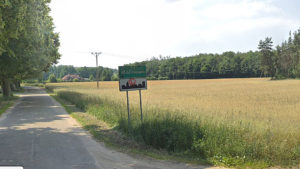New York City’s jaywalking laws may seem obsolete, but the NYPD still tickets hundreds of people a year for the violation. And although nearly every New Yorker jaywalks from time to time, people of color make up the overwhelming majority of those who are ticketed for it.
The City Council was slated to finally decriminalize jaywalking earlier this month, a move that would have all but negated a law that’s been in place since 1958. Lawmakers abruptly pulled the bill before it moved to a full vote in the City Council for revisions earlier this month after advocates raised concerns over the language they said would provide legal cover for drivers who hit pedestrians.
But the change to the law can’t come soon enough for New Yorkers who have received jaywalking tickets, which come with a fine of up to $250. City data shows the NYPD issued 786 jaywalking summonses during the first six months of the year — and only 15% of them were given to white people. Black and Hispanic people received 51% and 26% of those summonses respectively, according to the data.
“They (police) find any small reasons to lock anybody from non-white communities up. I grew up in Brooklyn, I’ve seen people get ticketed and arrested for jaywalking,” said Gladys DeSantiago, a Downtown Brooklyn resident. “Because a jaywalk turns into a stop and frisk, which turns into a whole criminal charge.”
NYPD data shows enforcement is increasing. The number of summonses for pedestrian violations this year have already surpassed all of the tickets issued in 2023.
Neighborhoods where police issued a disproportionate number of jaywalking tickets this year include Downtown Brooklyn, Coney Island, East Elmhurst, Jackson Heights and Jamaica. In comparison, the neighborhoods with the lowest number of tickets include affluent areas like the Upper East Side, Williamsburg, the Financial District and the Upper West Side.
“This just strikes me as a reemergence of stop and frisk under a new pretext, that’s how it sounds,” said Pace University constitutional law professor Bennett Gershman, although noting that the scale of stop and frisk was significantly larger. “The fact that they’re targeting minority members of the community, with the thought that minority people occupy a smaller percentage of New York than white citizens, you’ve got to think that this is discriminatory.”
Along Downtown Brooklyn’s Fulton Mall — where there are expansive pedestrian plazas in front of commercial stores and narrow streets mostly occupied by buses — pedestrians said they were not surprised that their neighborhood was ticketed for jaywalking at higher rates than the rest of the city.
“What makes it New York, it’s a blood sucker. You want to live here? It’s gonna cost,” said Downtown Brooklyn resident Paris Stewart, 59. “Jaywalking is an old law that’s been around since I’ve been around, and it’s [enforced] on whoever they deem.”
Councilmember Tiffany Cabán, who is one of the sponsors of the bill to decriminalize jaywalking, said police officers use jaywalking as a means to enforce other crimes.
“The discriminatory policing aspect of this, not only are Black and Latino folks being stopped for this more often than any other racial groups, but what it ends up being is a pretext for unconstitutional, or could lead to unconstitutional stop-and-frisk incidents,” Cabán said.
In recent decades, street safety advocates have panned the 66-year-old law that criminalized jaywalking in New York City as an archaic rule designed to prioritize motorists over pedestrians on the streets.
And while police still crack down on the violation, older New Yorkers like David Budansingh, a regular on Fulton Mall, said enforcement efforts against jaywalking aren’t nearly as bad as they were decades ago.
“You would get tickets for spitting, jaywalking … but now they don’t enforce no laws,” said Budansingh, 78, who moved to New York from Trinidad in 1964. “The laws should be in effect for everybody.”




